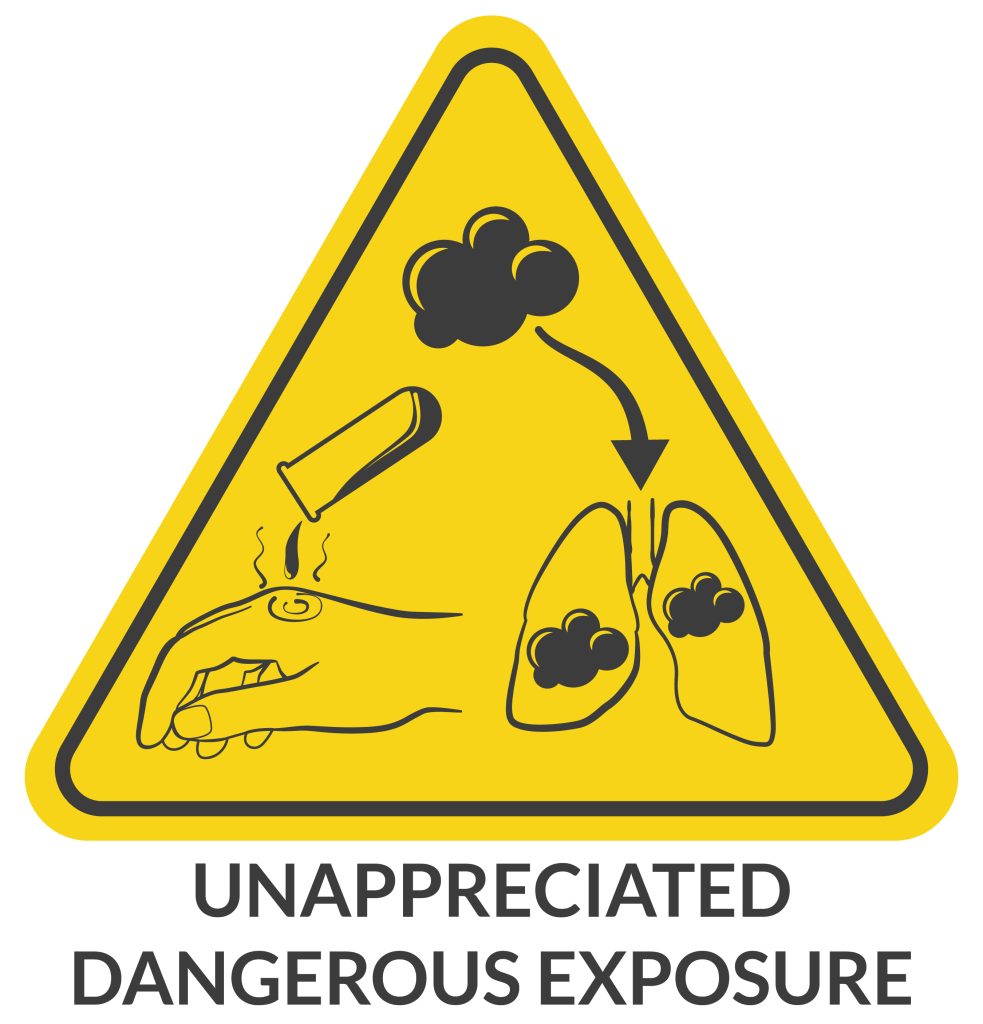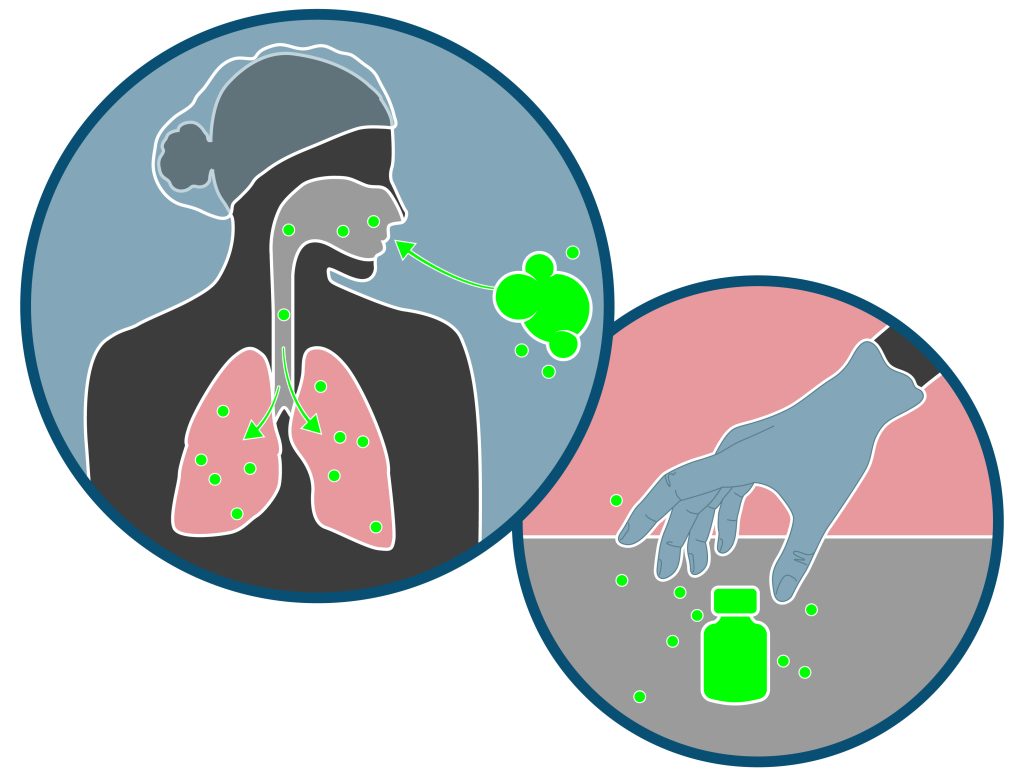In a much earlier Blog Post, we highlighted some threats to our overall well-being from years of clinical service. In that post, we avoided focusing on unseen environmental threats, like what is in the air we breathe and the things we touch. We felt these biological and biochemical contagions deserved their very own post, particularly through the lens of chronic exposure to toxins. We are back to draw attention to some of these, not to create alarm or exaggerate, but rather to encourage thinking about notions that may or may not have crossed your mind.
You are probably aware that your APEX crew often turns to the epidemiological literature to provide a broad representation of what is going on in the anesthesia universe. Doing so helps us avoid making false and generalized attributions based on a small sample or a nuanced case report. But we confess that if our bias guardrails relax, we too can easily experience the association equals causation logical fallacy.
One of the APEX crew worked in a large midwestern medical center for 7 years, and during that time, two department providers were diagnosed with multiple sclerosis, one at age 44 and the other at 51. After moving east, he learned of a third who was diagnosed. This was a remarkable outlier of MS incidence. Was the cause something in the practice? Was there an unknown bad actor in the air breathed during cases? Could it have been due to chronic exposure to trace anesthetics? Did an unknown toxin inhabit our environment? Or was this just a random statistical fluke? What was equally concerning was that two of the three were pediatric specialists. Theories were not in short supply and ranged from the biologically plausible to the downright bizarre.
Table of Contents
- The uncertain epidemiology of a work-related threat
- Lessons from N2O, COVID-19
- Hazardous duty pay
- Proposition 65 List, the Wellness Movement
- The dose of toxins and the microenvironment
- A review of workplace risks
- Taking care of yourself
Ambient exposure to toxins
OK, we hope you do not have a similar anecdote to relate. But we cannot help but think back to the many papers and studies of N2O exposure in the literature about women who work in dental offices where the gas is used. One such example, a 2017 paper in the Journal of Occupational of Environmental Hygiene, notes that engineering, administrative, and work practice controls have long been recommended to minimize staff N2O exposure during dental procedures. This is especially for females of childbearing years, as observational studies suggested an increased incidence of miscarriage, and possible teratogenicity, with occupational exposure to N2O.
Failing to follow recommended practices such as gas scavenging, checking for pipeline or equipment leaks, not starting N2Obefore the mask is applied, and discontinuing N2Obefore mask removal may not be consistently followed in some practices.
Then there are the issues involving exposure to ionizing radiation, chemicals (sealants, filling substances, cleaners, disinfectants), heavy metals, electrosurgery smoke plumes, infectious organisms, and job stress. Does any of that ring true for you?
What about our chronic exposure to substances that would most certainly be considered potentially poisonous? Consider Paracelsus, who five centuries ago wrote: “All things are poison, nothing is without poison—only the dose makes a thing, not a poison.” We know that even water and O2, essential to life, can harm us if the exposure amount is too high.
What about chronic exposure to micro-amounts of “stuff?” Is there literature suggesting that daily exposure over years (decades?) to inhaled anesthetics, antibiological solutions, laser and cautery smoke plumes, methyl methacrylate vapors, ambient strong cleansers, traces of drugs we draw up, plastics, and microscopic airborne particles a concern? Research concerning micro- and macro-particulates in the OR environment experienced a dramatic uptick in the 2020s given concerns about COVID-19. We know from an expansive body of work that we encounter unseen airborne contaminants in our workplace, even in laminar air-vented ORs. These may be inhaled or find their way to our skin or eyes. Personal protective equipment can only do so much. Given the sensitivity, and fragility of our CNS, what if we thought in terms of the “lung-to-brain-axis”?
We know that coal ash, a residual from coal-fired energy-generating plants, contains arsenic, cadmium, mercury, selenium, and other heavy metals. Breathing microparticles of coal ash is a known health hazard. But the micro-exposures that an anesthesia provider is exposed to each day remain poorly studied, ill-defined, and may not even be on our radar.
Hazardous duty pay?
Most would likely agree that CRNAs in today’s marketplace are well compensated. But is hazardous duty pay considered in that remuneration package? Beyond the military, police, and a few other industrial occupations, one rarely goes to work each day thinking their job puts them at risk for temporary or long-term bodily impairment. Should we be?
A few facts and their implications
- Fact: CRNAs are continuously exposed to materials daily that might affect their well-being.
- Fact: The implications are unclear as the amount and rigor of research in this area is slim, with few concrete and well-done studies to examine.
- Fact: The COVID-19 pandemic has illuminated and focused concerns in airborne and skin-touch domains.

The Proposition 65 List, created in California, is an intimidating document that includes compounds known to cause birth defects, cancer, reproductive harm, and conditions like asthma or organ damage affecting humans. You can access this list, which is updated regularly. You might be quite surprised at what is on this list.
The “Wellness Movement” is big business in the U.S. This phrase and its cultural penetration have taken on a life of its own, achieving great agency with many of us. Its origins can be debated, but it likely started in the 1960s as an informal but enlarging network of thinkers, healthcare professionals, entrepreneurs, and celebrities began to shape how we think about our long-term health in an increasingly technological and chemical-based life.
A case can be made that a lot of that percolated over to our unique “work office,” the OR, where decades ago, concerns escalated about exposure to HIV, TB, hepatitis, radiation, and electromagnetic fields due to our proximity to electrically powered equipment. To this day, there continue to be concerns even about cell phones emitting RF waves associated with brain cancer, although quality research suggests this is not a valid concern.
Much ado about nothing?
It’s difficult to quantify risk when precise outcomes are unclear, exposure duration is lengthy, the “dose” may be unknown, confounders are impossible to control, and the offenders are invisible and hard to measure. Contrast this to what we saw in 2023 when air quality was declared a serious health hazard in many states from fires that began in western Canada. Schools were closed, sporting events canceled, outdoor enthusiasts, vendors, public service workers, dog walkers, and over 50 million Americans were under an air-quality alert. In some places, to paraphrase a New York Times piece, the sky and air were a dystopian blood-orange hue resembling a scene from an apocalyptic movie.
Observed and known dangers reinforce the need to be careful and act, when possible, to mitigate the risk. We use PPE, don goggles during laser cases, wear ear protection when in MRI or lithotripsy, and self-adorn with heavy lead aprons during fluoroscopy cases. But what about other unseen or poorly identified risks? Such as the vapors, micro-biologicals, and micro-chemicals aerosolized into the atmosphere we work in or settle on things we touch. Is all this ‘much ado about nothing’, or are there substantive concerns?
Chronic exposure research
Let’s look at 2 papers; the first is a 2021 paper authored by researchers trying to decipher the role of anesthetic techniques and cancer recurrence provocatively titled “Pancreatic cancer and microenvironments: Implications of anesthesia.” The microenvironment is described as factors operative at the micro- or macro-biological level where anesthetic technique may promote tumor growth by altering inflammatory or immune responses. While the authors speak to concerns of those having cancer surgery, is it unduly speculative to think those same factors, when experienced in trace amounts over many years, might have a similar effect in promoting cancer genesis in a previously healthy provider? What if they provoke our immune system in a way that attacks our neuromuscular system—think multiple sclerosis? This is, of course, hypothetical, and the literature is very controversial.
The second paper, involving the comparison of the time of death of anesthesiologists to other physicians, proved interesting. The study sought to test the hypothesis that anesthesiologists die at a younger age than other physicians. Death records of physician anesthesiologists, internists, and all other physicians were studied over many years. Anesthesiologists had a mean age of death of 68.9 years, internists 74.4 years, and other physicians, 75,2. years. While this seems at first glance concerning, the major causes of the anesthesiologists’ deaths were suicide and drug-related behavior, not cancer. This paper, like the one above, doesn’t prove anything, rather, they become part of the conversation.

A final comment on chronic exposure to toxins
Brand new research demonstrates a high incidence of life-changing health challenges, cancer, and even fatalities in those associated with living and working at the U.S. Marine Corps Base Camp Lejeune in North Carolina over many years. Unappreciated at the time, the evidence points conclusively to the drinking water supply. There are many examples of such observations, ones usually made in the decade(s) following exposure. We live and work in a very complex biochemical and technological soup with known, unknown, and perhaps unknowable risks.
Our professional lives are peppered with risk factors beyond what we drag to work each day. Sleep issues, financial concerns, personal health, and interpersonal relationship challenges aside, we experience occupational risks as soon as we enter our institutional workplace. We can categorize these risks into five categories:
- Physical factors: exposure to compressed gases, ionizing and non-ionizing radiation, noise, fire, ventilation, lighting, temperature, ampule, and needle-related injury.
- Biochemical factors: allergy, gas/vapor exposure, contact with chemical compounds, and aerosolized smoke plumes.
- Biological factors: virulent and pathogenic viruses, bacteria, and fungal species.
- Emotional/psychological factors: job stress, workload issues, great responsibility, drug access, and possible workplace violence.
- Ergonomic factors: unappreciated physicality required of us, wear and tear on our muscles, joints, and nerves.
In this blog post, we focused on the first 3 categories. Randomized trials to quantify exposure-to-outcome metrics are not going to happen. However, we can reflect on the realities of what do. We work in a multi-risk environment. Situational awareness and mindfulness about how we can best protect ourselves from chronic exposure to toxins are good goals to set daily.
As CRNAs ourselves, we understand the challenge of fitting CRNA continuing education credits into your busy schedule. When you’re ready, we’re here to help.







